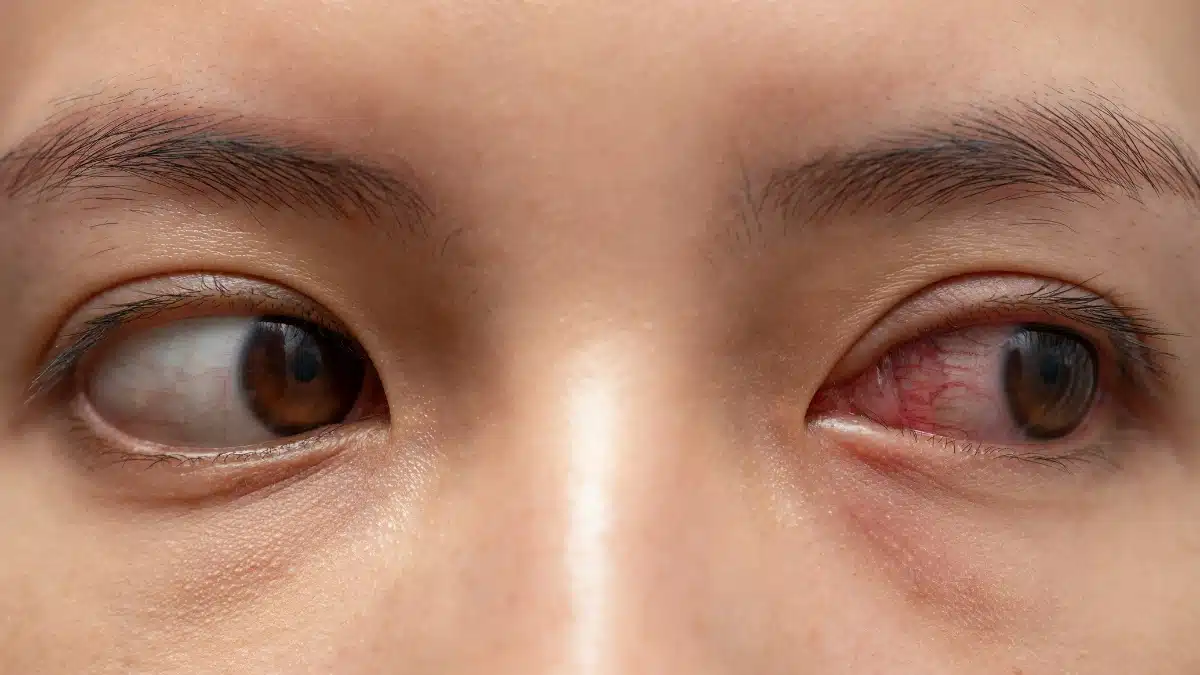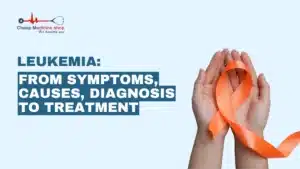Eye discomfort is a common concern, often manifested as a combination of eye redness and pain.
These symptoms can arise from various underlying causes, ranging from benign irritation to more serious conditions.
There are many different types of over-the-counter and prescription eye drops available to treat various causes of eye redness and pain.
This article will explore the potential triggers for eye redness and pain and distinguish between redness with or without pain.
It will also explore treatment options, including using eye drops for relief.
Eye Redness and Pain: What Does Pain and Redness in One Eye Mean
Experiencing eye pain and redness in one eye can be quite alarming.
This symptom combination may be due to several factors, such as infections, foreign bodies, allergies, or corneal abrasion.
Understanding the possible cause is crucial for effective management.
Buy effective eye drops from Cheap Medicine Shop and protect your eyes from redness and pain.
Let’s talk about these factors in detail.
Infections
An eye infection is one of the most common culprits for redness and pain in a single eye or both eye simultaneously.
Bacterial pink eye or viral pink eye can cause redness, discomfort, and at times a burning sensation.
To explore eye infection medications, read Eye Infection Medicine: Understanding Your Options.
Foreign bodies
Another possible reason for pain and redness in one eye is the presence of a foreign body.
Tiny particles like dust, sand, or eyelashes can get trapped in the eye, causing irritation and discomfort.
These foreign bodies may sometimes scratch the eye’s surface, resulting in redness and pain.
It is vital to avoid rubbing the eye as this can worsen the pain and redness in the eye.
Allergies
 Source: diplo_game
Source: diplo_gameAllergic reactions can lead to redness and pain in one eye.
Allergens like pollen, pet, dander, or certain cosmetics can trigger an immune response in the eye, causing inflammation and discomfort.
These symptoms often come with itching and excessive tearing.
To get a better understanding of red eyes from allergies, read Red Eyes from Allergies.
Corneal abrasion
A corneal abrasion, or a scratch on the cornea, is a painful condition resulting in redness in one’s eye.
It is typically caused by minor injuries, such as forcefully rubbing the eye or accidental contact with a foreign object.
What Does Eye Redness and No Pain Mean
In contrast to pain and redness in one or both eyes, some individuals may experience eye redness without any pain.
While this may seem less concerning, it is essential to recognize that redness alone can also indicate underlying issues that should be addressed.
Dry Eye Syndrome
One common cause of eye redness without pain is Dry Eye Syndrome.
This condition arises when the eye does not produce enough tears or the tears evaporate too quickly, resulting in dryness and redness.
It can be triggered by prolonged screen time, exposure to dry or windy environments, and certain medications.
Environment factors
Environmental factors, such as exposure to smoke, pollution, or allergens, can lead to eye redness without pain.
Redness caused by these factors is often temporary and can be managed by avoiding the irritants whenever possible.
Subconjunctival hemorrhage
A subconjunctival hemorrhage is another condition that can result in redness without pain.
It occurs when a small blood vessel in the white part of the eye (sclera) breaks, leading to a red spot on the eye’s surface.
Eye Drops for Pain and Redness
When eye redness and pain become troublesome, eye drops can be a valuable tool for providing relief.
These drops are available over the counter or by prescription, depending on the underlying cause of your symptoms.
To explore some home remedies for eye pain, read 5 Eye Pain Home Remedies For Quick Relief
Artificial tears
 Source: tirc83_from_Getty_Images
Source: tirc83_from_Getty_ImagesArtificial tears, or lubricating eye drops, are a go-to solution for redness and pain caused by Dry Eye Syndrome or environmental factors.
These drops help moisten the eye’s surface and relieve discomfort.
Antihistamine eye drops
Antihistamine eye drops are designed to alleviate eye redness and itching associated with allergies.
These drops can be particularly effective in providing quick relief from allergy-related eye symptoms.
Decongestant eye drops
Decongestant eye drops are intended to relieve eye redness by narrowing the blood vessels in the eye.
Prolonged use of decongested eye drops can lead to a condition known as ‘rebound redness’, where the eyes become even redder when the drops wear off.
Prescription eye drops
Sometimes, prescription eye drops may be necessary to address the underlying causes of redness and pain.
To learn more about over-the-counter eye drops for eye infection, read What are the Best Over The Counter Eye Drops For Infection?
Conclusion
Eye redness and pain are symptoms that can arise from various underlying causes.
Whether dealing with pain and redness in one eye or experiencing redness without pain, it’s essential to recognize the potential triggers and seek appropriate treatment.
Over-the-counter eye drops for mild eye redness and pain and prescription medicine for severe conditions like Glaucoma can be a valuable resource for relieving discomfort.
Still, it’s crucial to use them as directed and consult with a healthcare professional if your symptoms persist or worsen.
Buy Ocurest 10 ml from our pharmacy and treat the allergy in your eyes today!
Frequently Asked Questions
How can I relieve eye redness and pain at home?
You can try using artificial tears, applying a cold compress, and avoiding allergens to relieve mild redness and pain. However, if symptoms persist, consult an eye care professional.
See our Recommendations
When should I seek immediate medical attention for eye redness and pain?
If you experience sudden, severe eye pain, significant vision changes, or trauma to the eye, you should seek immediate medical attention for eye redness and pain.
See our Recommendations
Are eye drops effective for treating redness and pain?
Yes, eye drops can be effective in some cases, such as for allergies or dry eyes. However, the type of eye drops you need depends on the underlying cause of your symptoms. Consult an eye doctor for proper guidance.
See our Recommendations
How often should I schedule an eye examination to monitor eye health?
It’s recommended to have a comprehensive eye exam at least once every two years or more frequently if you have a history of eye problems or as advised by your eye care specialist.
See our Recommendations
Can eye redness and pain be related to lifestyle factors?
Yes, factors like lack of sleep, excessive screen time, and heavy smoking can contribute to eye redness and discomfort. Making healthy lifestyle choices can help reduce the risk.
See our Recommendations
Cheap Medicine Shop only refers to credible, authoritative sources for our content. If you’re curious about how we ensure the integrity of our content, we encourage you to read our Content Information Policy.














